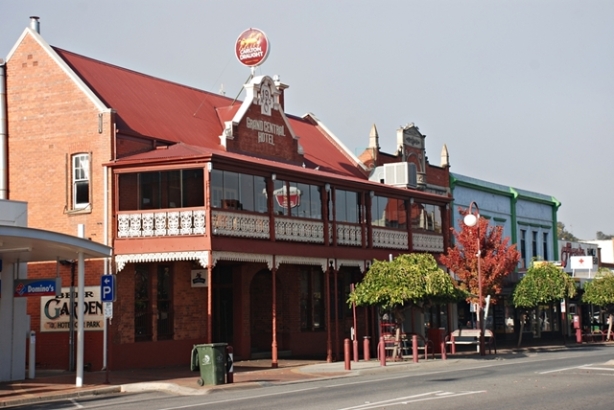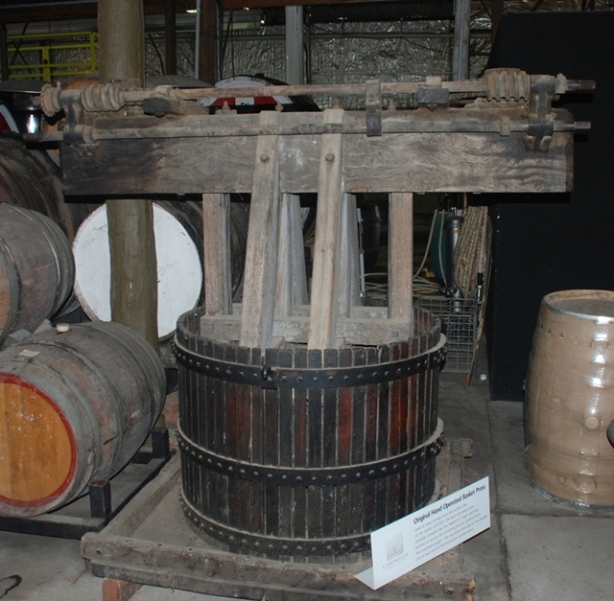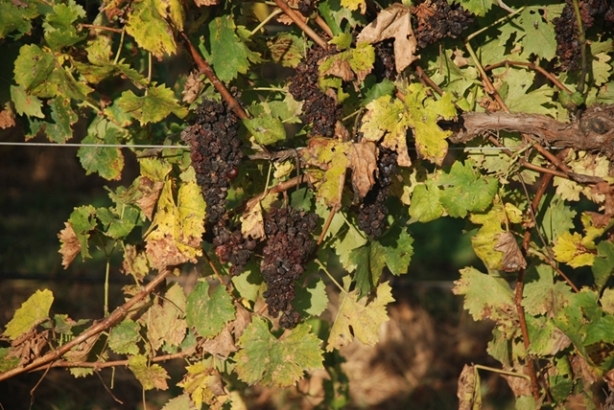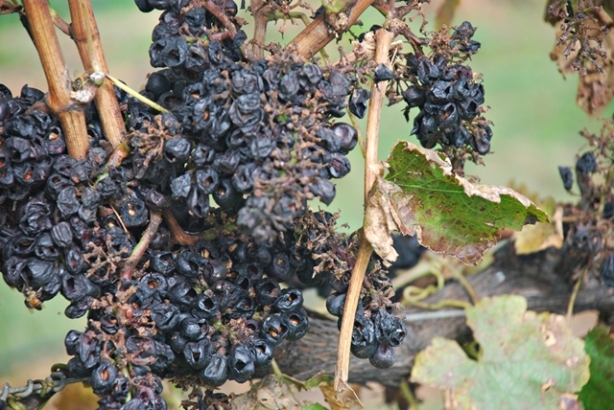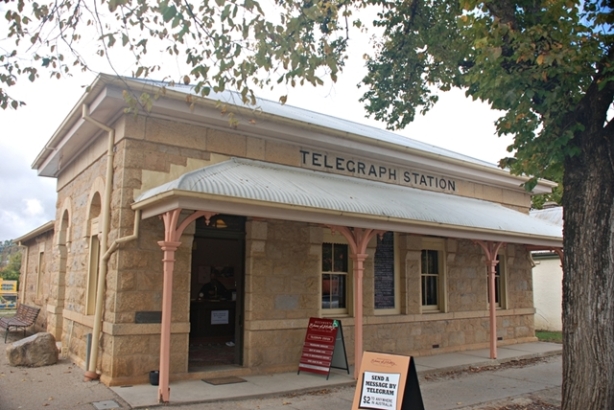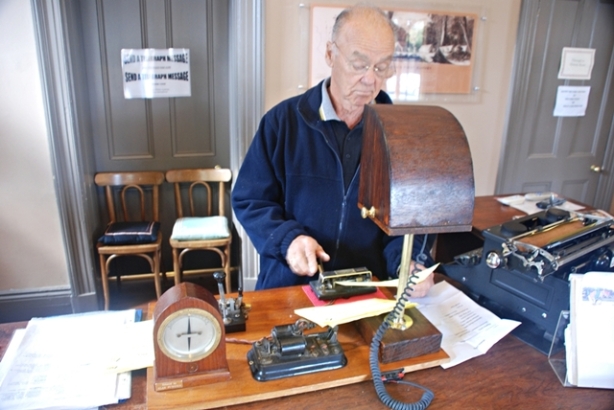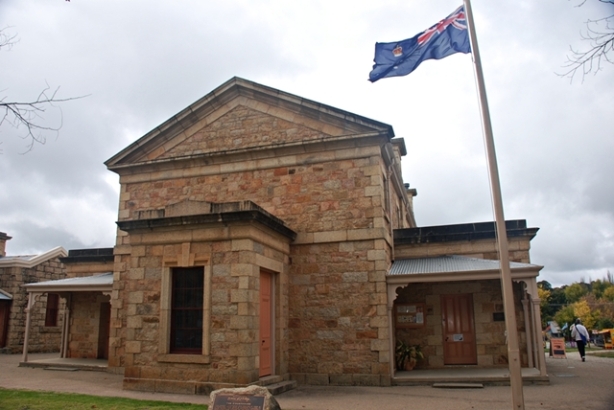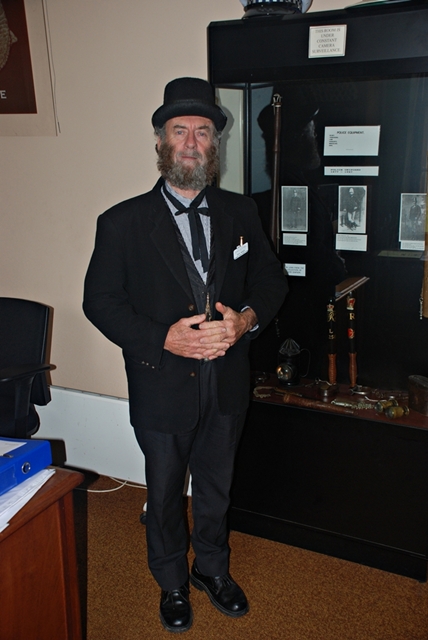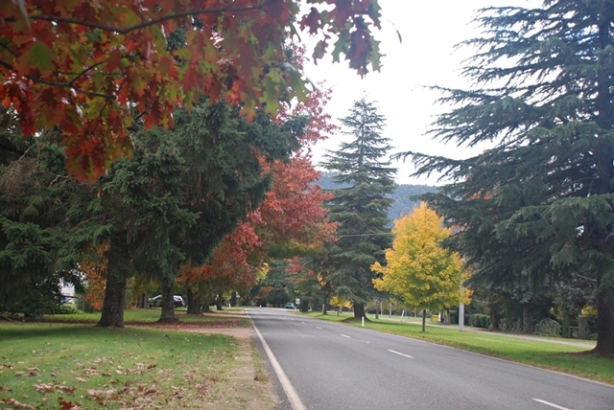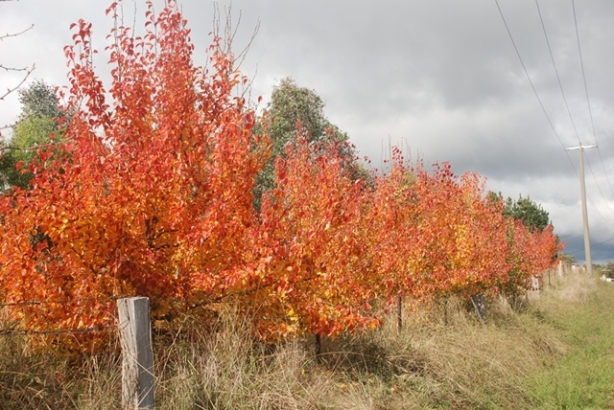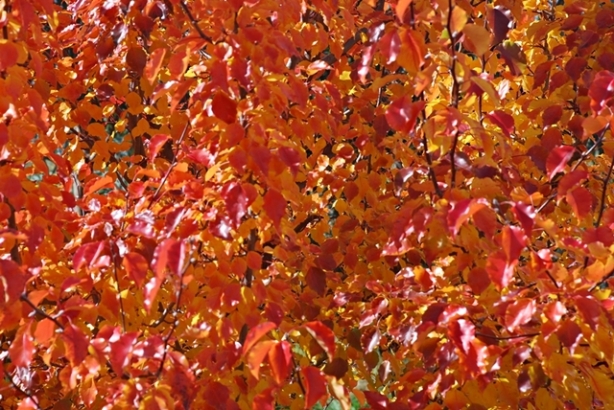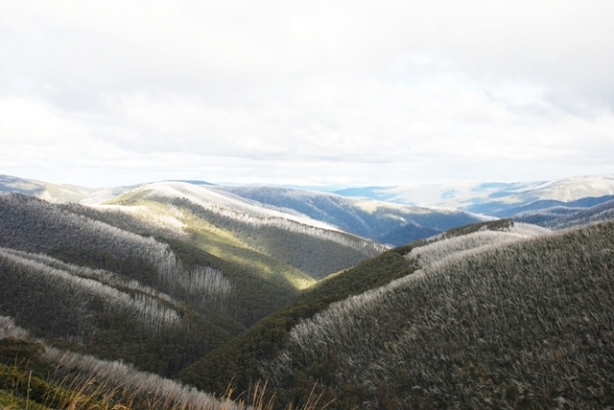21 April 2011
With the meetings at Melbourne finishing the day before Good Friday, I had the option of spending the week end at Bangalore or somewhere off Melbourne. Since Sandhya and Bharath were not at Bangalore, I decided to spend two days taking in some sights in Victoria. Earlier, I had been to the South-West of Melbourne, along the Great Ocean Road and then going to Ballarat. So, this time I decided to head North-East and chose a town called Wangaratta, which is at the starting point of the Great Alpine Road – the road that traverses through several towns in Australian Alps. This road is supposed to be Australia’s highest sealed road accessible throughout the year and despite the fact that I had no warm clothing, I wanted to give it a try. The point that there is a wine region called Rutherglen near Wangaratta sealed the deal and so I hired a car from Melbourne and set off by mid-morning on 21st.
Thanks to the GPS and wonderful roads, I arrived at Wangaratta in reasonable time and checked into my motel. There are no real hotels in this town and I had great difficulty finding accommodation because of the long week end. Hence, I gladly took the Miller’s Cottage Motel without any complaint. Wangaratta turned out to be a one street town with a population of about 18,000.
Rutherglen is a short distance away from Wangaratta and I set off to Rutherglen town along the back roads. The day was okay even if a bit cloudy and the scenery along the road was beautiful. The main occupation of people in this region seems to be farming – cattle, sheep, grapes etc. Great meadows lined the road with large trees appearing here and there. Soon, I came up on a winery called Campbell’s and went in to have a look.
They had an interesting display of equipment used in the early days of wine making.
Hand operated basket press
Wine filter
Bottle filling machine
Corking machine
The vineyard was looking very attractive with the vines stretching on and on. The bushes were almost four feet tall and I found that the grapes had dried on the vines. It seems wine in this region is produced mostly from dried grapes and they leave it on the vine to dry. I had always thought that the grapes were plucked when they were ripe.
I soon arrived at the town of Rutherglen. This is the centre of Australia’s oldest wine growing region and is considered “historic” as it dates back to 1836. Gold was discovered here in 1860 and that is when Rutherglen got its name and shot into prominence. The first commercial establishment was the “Star Hotel”, which is still working even today.
As was the case with many small towns in those days, Rutherglen had its own newspaper as well. I saw one newspaper building – probably the original one. I have seen that there are many such local newspapers in the US as well and their towns also had the same approach of having their own newspapers. Local news seems to have been most important to the patrons and may be that is why the newspapers in the US give more prominence to local news than international stories, even today.
The town itself has been preserved rather well and the storefronts have an old-world look. Once again I was reminded of what a bad job we do in India in preserving our history.
I drove back to Wangaratta and went to the town for a quiet dinner and a glass of wine. All along the road, I saw many trees that had no leaves at all – may be because it is the Fall season now. I wonder whether these trees will grow leaves again in Spring or will they die off? I caught an image of a tree against the darkening sky and it was a picture of gloom!
22 April 2011
As usual, all plans of getting up early came to nought and the day was reasonably on by the time I drove out of my motel parking. Wangaratta town was deserted because of Good Friday and I could not even find an open coffee shop. My plan for the day was to explore the Great Alpine Road, taking in the towns of Beechworth, Bright etc. Beechworth is another “historic” town and is a short, scenic drive away from Wangaratta. The town was founded in 1850 or so and this one also became a boom town with the discovery of gold in 1852. They have also a done a good job of maintaining the old historic buildings and it has a nice, period look to it.
Of particular interest is the section where the old Town Hall, Courthouse and Telegraph Station stand. These buildings are all from the 1850s and the Telegraph Station has a working Telegraph line with an operator tapping away in Morse code, using the same old equipment, even now. I went in and sent a telegram to my cousin in Sydney and chatted with the operator. He was kind enough to pose for a photo of him sending the wire. He told me that his brother-in-law is an Indian and that he is currently getting some grief on cricket!
Next stop was the Courthouse. This is a big draw for tourists because a bushranger (basically a robber), called Ned Kelly, was tried in this Courthouse. Supposedly, he was the last of the old style desperadoes and seems to appeal a lot to the local population. The Courthouse was built in 1858 and was in use till 1989. The attendant at the Courthouse was in traditional attire and posed gladly for a picture.
He told me that Ned Kelly’s mother (Ellen) was also a colourful character. She migrated from Ireland when she was nine and married Ned’s father (John Kelly) in 1850 and had eight children with him before John’s death in 1866. She then had another child by a man named Bill Frost and when he refused to acknowledge the child, she sued him in court and won support costs for the baby. In celebration, she rode her horse around a nearby town call Benalla and was arrested for “furious riding in a reckless manner”. A few years later, she hit a police constable over his head with a shovel when he abused her daughter and was sentenced to three years in prison for attempted murder. She was held in the Courthouse at Beechworth for two months till the Circuit Judge could arrive to conduct her trial. It was while she was in prison that her son, Ned, was sentenced to death. She visited him in gaol before the night of his hanging and told him to “die like a Kelly, son”. Ellen lived to the ripe old age of 91 and died in 1923.
It was her story that attracted me more than her son’s – though all tourism web sites are filled with Ned Kelly and his exploits. He seemed to represent the resistance to the colonial power and looks like the whole Kelly family was treated a bit unfairly. Australia must have been a rough, frontier country in those days and life must have been hard for the common people. Those that survived were spirited folks that fought their way through and had little time for the “gentle, prim and proper” behaviour that so characterised Europe at that time. Ellen Kelly would have been like many others at her time. I am sure similar stories can be found in the US also. These two countries have some similarities in that they are both relatively young and were populated and developed by settlers. You can also find similarities in their treatment of the indigenous people, which was ruthless, to say the least.
Edward (Ned) Kelly was born in 1855 and led a gang of around four. They were bushrangers and Ned had a fantastic plan of setting up a Republic of North Eastern Victoria. His plan was to have the four members lead an army of supporters and he came up with an idea of having protective armour for these four important people. A replica of the armour is displayed in the Courthouse and it looks rather crude and unwieldy. In any case, all these plans came to an end with the capture and subsequent execution of Ned Kelly in 1880.
From Beechworth, I left for the town of Bright. A great part of driving around in Fall, in regions like these, are the wonderful colours that you get to see as leaves change colour. There was a whole variety from dark green to bright red on display along the roads. These leaves will all fall off by winter and the leafless trees are a desolate sight.
Bright turned out to be another small town, much like Beechworth, Rutherglen etc. En route, I stopped at a winery and had a taste of some red wine. It was quite full bodied and I liked it. About an hour’s drive from Bright, on the Great Alpine Road itself, comes the ski village of Mount Hotham. This village is at an altitude of 1862m and the route up to Hotham is quite steep with many sharp curves. The mountain seemed to be mostly jagged rock with very little vegetation. The soil layer is rather thin and it is pretty obvious that large trees will not be able to grow here. I could see many small bushes that had shed all leaves and had turned dry and white. From afar, it looked as if the mountains had grey hair!
The temperature dipped by about 10 degrees as I went up the mountain and it was quite chilly. There were some breath taking views but I could not stop at most places as the road was quite narrow. The mountains looked jagged and once could see many deep ravines. There are some footpaths, which one could explore but I could not do it as I was not dressed right and it was quite chilly and cloudy. It was almost dark by the time I got down from the mountain and I was quite tired as well by then, having driven about 250km.
I had a quiet meal once again in Wangaratta with the thought that I had to leave early next day morning to catch my flight back from Melbourne. Overall, I was happy that I had taken the time to visit this area, even if it is not very rich in history, like Europe. The views were literally breathtaking and the two days were a visual treat.
